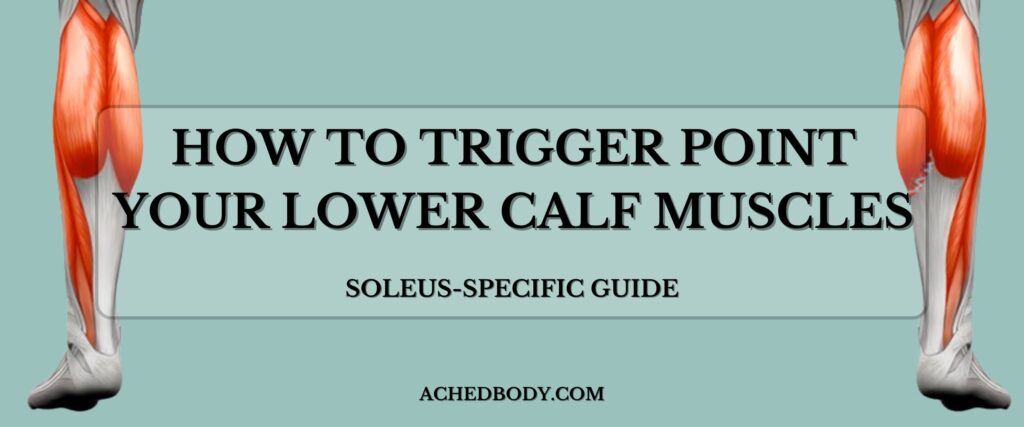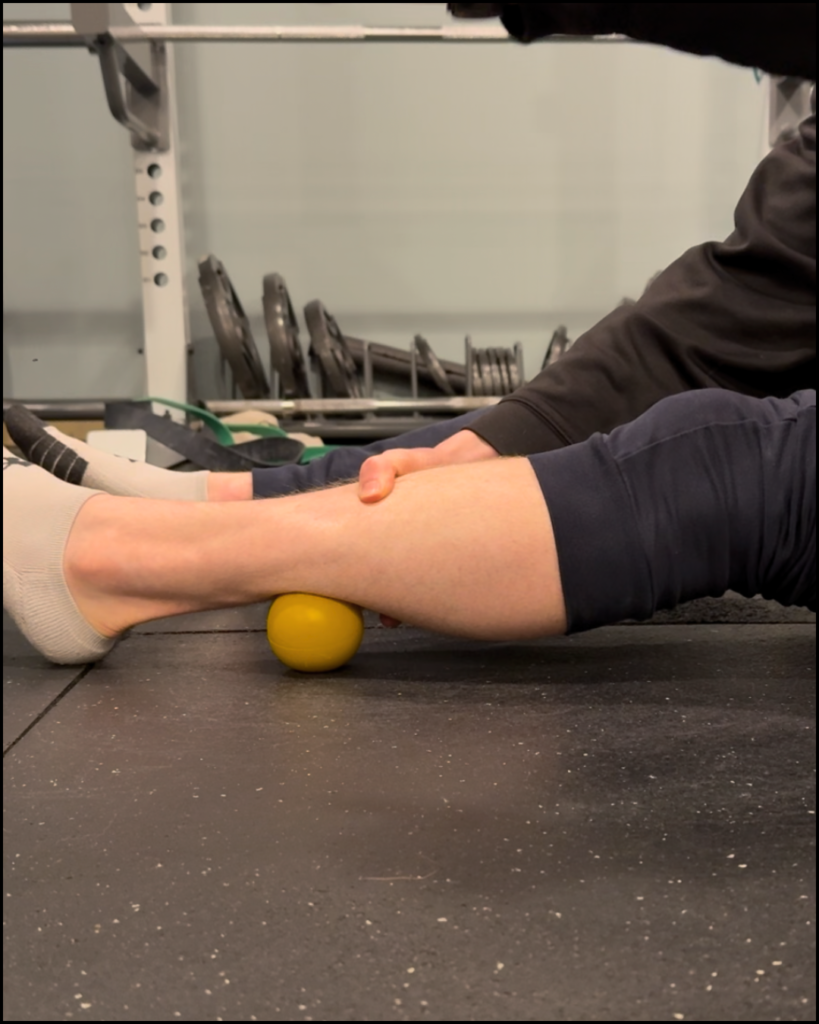
Trigger Pointing Your Lower Calf – Soleus Muscle Deep Dive (with video)
The soleus is one of the strongest muscles in our bodies. It takes on so much load and has to do it without fatiguing.
But it is overlooked when addressing calf tightness, but in most people it is chronically tight and underestimated in its need for therapies.
Its deep location beneath the gastrocnemius makes soleus tightness and trigger points harder to detect but can have a significant impact on lower leg pain.
This guide will walk you through:
- How to locate and identify soleus (and posterior tibialis) trigger points.
- The best self-release techniques for breaking up muscle knots.
- How to Foam roll your lower calf (quick guide).
If your calf tightness extends beyond the soleus, you may also benefit from our Gastrocnemius Trigger Point Guide for treating the upper calf or our Foam Rolling for Calves Guide for overall myofascial release.
Alright, let’s get to it:
Finding Soleus Trigger Points (Diagrams & Locations for Precision)
Coming soon
Best Techniques for Releasing Soleus Trigger Points
Below are my best self-treatment techniques for releasing soleus trigger points and improving lower calf mobility.
Finger/Thumb Compression
Here’s what has helped me with my deep calf issues.
I like to sit on the floor and use a little bit of massage oil to slide better along my leg.
There are a few techniques that I like to pinpoint the tightness.
Squeezing & Pinching
Take the muscle between your thumb and four fingers like you’re making a sock puppet with your hand.
Then use gentle pressure from both sides to squeeze the muscle.
This works well if you hold the squeeze or slowly release the grip like in the video below.
Direct Pressure
Using your hand can be a nice way to feel the knots from both sides of the coin. Unlike using a lacrosse ball, you can feel the trigger points in your leg as well as in the hand you are using to push.
This gives valuable feedback in finding the best locations!
If you’ve spent a lot of time working on your soleus and it doesn’t seem to fix your issue, you may have tightness in your posterior tibialis muscle.
Watch this video (coming soon) to learn an active release technique that can be applied to both the soleus and posterior tibialis muscle!
If your fingers or thumbs get tired or if you just don’t want to use your hands that much, try a ball…

Massage Ball Trigger Pointing (watch video here)
Sit on the ground and use a lacrosse ball (or any ball you prefer) to do the following techniques with:
Pin
Pin + Stretch
Roll Across The Belly
I recommend pairing this with a stretch to get a deeper release. You can also try foam rolling… read more below!
Foam Rolling with Modifications (For Full Soleus Release)
I wrote a deep-dive article on how to foam roll calves here.
But here are some basics and specifically how to do it for the soleus:
I like to use a large PVC pipe, but a normal foam roller will work just fine!
- Sit on the floor with your legs extended and place your roller under one of your calves, focussing on the lower portion.
- Cross one leg over the other to add more pressure.
- Slowly roll from just above the Achilles tendon to the middle of the calf, focusing on the lower portion.
- Pause on any tight spots and hold pressure for 30-45 seconds.
- Change the angle you roll at to find tight points in your tissue.
Watch the video below for a closer look at how to do it!
And for a step-by-step guide on proper foam rolling techniques, check out our Foam Rolling for Calves Guide.
Get Rid of Trigger Points Now
Releasing Calf Trigger Points doesn’t need to be a difficult task for you.
It’s important to work through the trauma that we’ve put our bodies through over time. And no, I don’t mean some made-up trauma. I mean the micro injuries that we inflict on ourselves from years of use and accidents.
These things add up and compound in significant ways.
And that is why you’re reading this right now.
If you think you could benefit from more information on fixing your calf, my overview on how to relieve tight calves may be helpful for you.
You can also explore all of the calf-related content on how to stretch, trigger point, and build bulletproof calves on the Fix Your Calf category page!
Let me know if you need anything in the comments!
-Nick